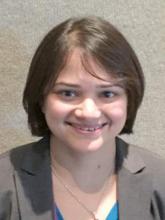SAN DIEGO – Despite an increase in women entering the gastroenterology field, a new study finds that they are severely underrepresented in academia as fellowship program directors and division chiefs.
In addition, most female program directors have lower academic ranks than did their male counterparts.
“A lack of female leadership can detract future women from entering the field,” said study lead author Dr. Sonali Paul, a gastroenterologist and research fellow in medicine at Massachusetts General Hospital in Boston. “Further research is needed to understand these barriers, whether they’re due to personal choice or more systemic issues. Understanding the challenges women face in academic promotions will allow for policy changes.”
According to statistics quoted in the study, women made up more than a third of gastroenterology fellowship positions and 18% of the academic workforce in 2013. At the same time, more than half of medical graduates are women.
“The role of women in GI is important, especially given that studies have shown that women prefer female endoscopists,” Dr. Paul said. And women make up significant portions of the patient load in GI clinical practices, she said.
But it hasn’t been clear if the increase in fellowship positions has corresponded to a higher number of women in positions of academic leadership.
To better understand the situation, Dr. Paul and her associates analyzed the gender and academic rank of GI fellowship program directors and division chiefs in 2015. The researchers analyzed websites and social media to gather the data and also made direct contacts, Dr. Paul said.
At 165 academic GI programs, 85% of these positions were held by men. Of program directors, 81% were male; 89% of division chiefs were male.
Of the men who hold these positions, half were program directors and half were division chiefs. Among women, however, 67% were program directors and 33% were division chiefs.
There was also a disparity in terms of academic experience. Female division chiefs were less likely to be professors (46%), compared with male division chiefs (82%).
Why the disparity? One possible explanation is a “leaky pipeline,” Dr. Paul said. This refers to the fact that women leave academic medicine at higher rates than men do.
Family obligations are one explanation, she said, “but I don’t think that explains everything in the process. A lot of women have felt that promotion was of no benefit to them and that there was a lack of encouragement.”
Dr. Paul notes that the study has limitations. It’s cross sectional, and misclassification errors are possible.
During a discussion period, a questioner noted that it takes time for an academic physician to move up: “Shouldn’t we look at the fraction of graduates in 1996 who were female and now are professors? It’s unusual for someone at less than a professor rank to be division chief, as compared with program director.” Dr. Paul agreed that this would be a good avenue of research.
In addition, she said, “it will be important to examine if these gender disparities are unique to gastroenterology or if they extend into other specialties that are more female dominant, such as rheumatology or geriatrics.”

